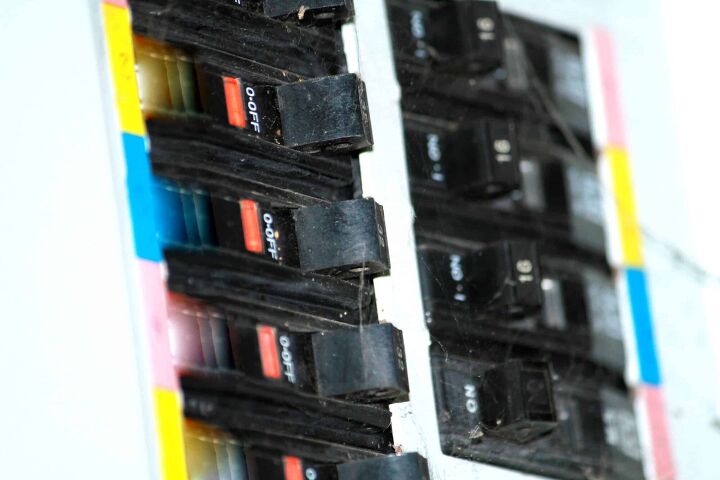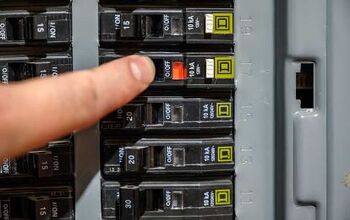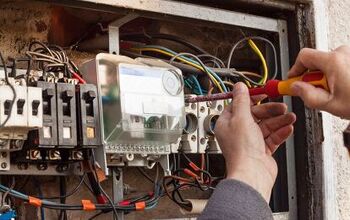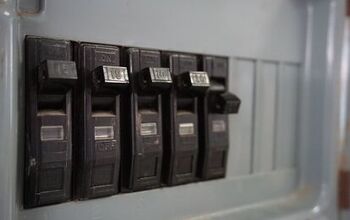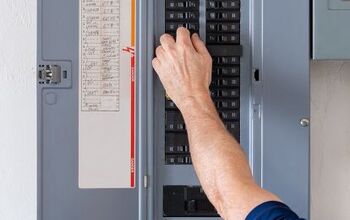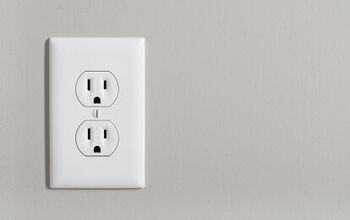How To Increase Circuit Breaker Amps (Find Out Now!)

New appliances or new tools in your garage workshop may have you wondering about getting enough electrical service to those outlets. You know you need more amps but aren’t sure how to accomplish the upgrade. This situation leads to the question, how to increase circuit breaker amps?
It isn’t as simple as you might think.
To increase circuit breaker amps, you will need to upgrade the wiring in your home to handle a greater amperage load. A 14-gauge wire is sufficient to handle 15 amps without overheating. To increase your circuit breaker amps, you can either have an electrician rewire your home or add a new circuit.
The only way to increase the amps delivered by a circuit in your home is to ensure that the wiring in the home can carry the amperage. In most instances, this is a job best left to a professional and licensed electrician.
Do You Need to Hire an Electrician?
Get free, zero-commitment quotes from electricians near you.

What Are Amps?
Amps, or amperage, is the measurement of how much work and electrical circuit can perform. In most homes in the US, the standard for electrical service is 15 amps at 120 volts. This standard home electrical circuit uses 14 gauge wire as a standard.
The 14 gauge wire is sufficient in size to handle the 15 amps without overheating. Also, light switches, outlets, and other connections expect this standard voltage and amperage.
Breakers – The Valve that Protects the System
Circuit breakers work like safety valves. If the demand exceeds the amperage rating of the circuit breaker, the circuit breaker opens to protect the electrical system. The circuit breaker interrupts the flow of electricity in the circuit.
As an example, a normal 15 amp household circuit can deliver about 1800 watts to the circuit. If you plug in a 1500 watt hairdryer and a 1500 watt toaster on the same circuit, the circuit breaker should open. You have asked the circuit to provide 25 amps on that circuit. That is 20 more amps than the circuit breaker will allow.
Getting More Amperage
As appliances and other electrical equipment, we use in our homes become larger and demand more power, the strain on the electrical system can become a problem. Unfortunately, adding additional capacity, or delivering more amps, is not as simple as it may appear.
Since the electrical circuit acts as a system, you cannot replace breakers to increase the electrical service capacity. Think of a water hose. If you try to gain more flow from the water hose by attaching a bigger pump. If you don’t use a bigger water hose, the usual outcome is a burst water hose.
It’s All About the Size
Wire size matters. The wire size used in the electrical wiring in your home matches the size of the breakers. The standard size of wire for a home electrical circuit is 14 gauge. This size of ire works well with 15 amp circuit breakers.
To increase the circuit breaker to 20 amps generally requires a wire size of 12 gauge. In most homes, it is impractical to rewire the electrical system for larger amperages. The wiring in your home was put in place during construction and runs through the walls of the house.
What are the Options?
The options are limited if you need higher amperage electrical service in pars of your home. We recommend that you consult with a qualified and licensed electrician about any changes you want to make in your home’s electrical service. There are several options to discuss with your electrician.
Rewiring – A Major Renovation
If you decide to require the circuits where you need more amperage, be prepared for the challenge. Upgrading electrical circuits is best left to a professional electrician. There are some things to consider if you decide to tackle the job yourself.
- Don’t forget the code requirements. The city where you live may require a permit to rewire any part of your home. A permit means meeting the electrical code and having your work inspected as you go.
- Working with electricity can be dangerous. You will need to leave the electrical service to most of your home live as you work. One wrong step could be disastrous and dangerous.
- Unless you are skilled, a mistake in your wiring could prove catastrophic. Short circuits could damage the other electrical circuits in your home or worse. An inadvertent fire could easily occur.
- Do you have the tools and expertise to not only do the wiring but repair any structural or finish work that may be necessary? You may need to remove the wallboard or deal with running wire through structural parts of your home.
Adding a New Circuit
Having an electrician add a new circuit to serve your needs may be an easier and cheaper alternative. Often, your existing service panel will have room for another breaker, and your electrical service will be adequate to support a new circuit. If the circuit is going to a garage, surface mounting the outlet might be feasible.
We don’t recommend that most homeowners attempt to do this type of work themselves. This project requires additional wiring in the service panel. Working inside a service panel is not a job for amateurs. Potentially deadly voltages exist in the service panel.
Add A Circuit or Rewiring Your Home
Other considerations are necessary if you decide to add a circuit or rewire part of your home. Again, a qualified electrician can help you sort out these issues before deciding. It would be best if you considered some of these factors as you make your decision.
Do You Have Enough Electrical Service?
Many urban electrical utility companies only provide 100 amps of service to most customers. If your utility company can only provide 100 amps to your home, you must add up the total amperage required to service your home as currently exists.
If the total of the circuits in your home adds up to 95 amps, you only have 5 amps to spare for any upgrades. If you go beyond that, you risk overloading the entire system, which can create bigger problems.
Is Your Entrance line Capable?
Even if your utility company can provide more than 100 amps to your home, the service entrance wire may not be big enough to handle the larger amperage. This problem is especially true if your home has underground utility services.
An underground wire is expensive, and builders usually size the wire as close to the amperage requirements, as necessary. Adding another 20 or 30 amps of utility service may overload your entrance lines to the point they fail.
Is Your Service Panel Big Enough?
The amperage rating on your service panel is typically the same amperage that your utility company provides. Most homes have a 100 amp rated service panel. If you add circuits or increase the amperage of circuits, you may exceed the rating of your service panel. To get a higher rating will require replacing the service panel.
Do You Need to Hire an Electrician?
Get free, zero-commitment quotes from electricians near you.

The Amperage Question – Can I get More?
The simple answer is yes. The better answer is yes if you are willing to pay the price. There is no easy way to up the amperage in a circuit in an existing home. Do not be misled to believe that you need only replace the breaker. Taking what appears to be an easy answer can be a disastrous choice you will regret at some point.

Dennis is a retired firefighter with an extensive background in construction, home improvement, and remodeling. He worked in the trades part-time while serving as an active firefighter. On his retirement, he started a remodeling and home repair business, which he ran for several years.
More by Dennis Howard



